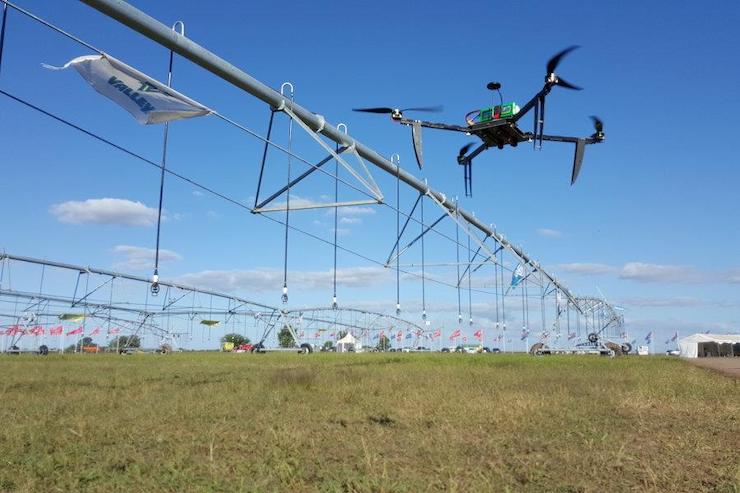
© WADI
There is no denying that the world is facing rising temperatures, due to climate change. As we reach the peak of the summer season, shortages in water will lead to droughts and a large financial burden for many governments. People are urged to do their part in preventing water loss like making sure water faucets are fully turned off. However, in some European countries it is estimated that half of the water being funneled through pipes is lost before ever reaching homes and businesses. The massive pipes through which water is channeled are in need of constant upkeep as they often leak. Even the smallest of leaks can lend to huge losses in water. The European Union (EU) through the Horizon 2020 Project is wrapping up the final leg of a three year project using drones to help manage water loss.
Horizon 2020 is a joint program that puts an emphasis on economic growth through research and technological developments. To address the EU’s water shortage issues, Horizon 2020 contracted WADI, an airborne water leak surveillance company. As explained on their website, “WADI’s overall objective is to contribute to the reduction of losses in water transmission systems for water supply, irrigation, and hydropower, and simultaneously, to decrease the related energy consumption.” To accomplish this, WADI has employed drones to consistently monitor pipe lines. The cameras attached to drones allow inspectors to see in hard to reach places. But to fit WADI’s needs, a simple camera equipped drone would not be enough to get the job done.
The drones being used by WADI have infrared cameras mounted on them. These cameras do not just photograph the scene, but allow analyzers to use a triangular method of data sets to find water leaks even if the pipe is not visible. Inexpensive and easy to operate, a drone can be flown over buried pipelines whenever needed. The infrared camera gathers information on the surface temperatures and vegetation growth. The collected images are compared to what should be standard, providing an accurate model of whether a pipe may or may not be leaking. Rather than sending out a ground crew to repeatedly test miles of pipes, a single drone can inspect a days worth of pipeline in a fraction of the time. Because the drones can collect so much data, they can be routinely used to successfully minimize leaks in pipes.
WADI began this innovative drone surveillance project on October 18-19, 2016 in Milan, Italy. Funded by Horizon 2020, WADI’s plan was sent into action with the collaboration of researchers and engineers from Italy, Belgium, France, Spain, Poland, and Portugal. Next, the practicality of the drone system was tested in France to ensure all the drones, cameras, and analytical equipment was properly functioning. After fine tuning everything, WADI preformed two separate tests in Portugal which came back with impressive results. “All in all the system proved able to detect water in the soil in approximately 70% of cases, while the performance of the technology in discovering actual water leaks was approximately 50%,” said Elena Gaboardi, WADI’s executive director. “Most importantly, we observed that the accuracy of the system in targeting true events has improved significantly over time, from one campaign to another.”
The testing phase of WADI’s leak detection system came to an end in late July 2020. Now they are transitioning from a working prototype to a commercial system to be used by water companies throughout the EU. According to data collected by WADI, “If 20% of the European water network applied WADI’s solution, it can be roughly estimated that each year the amount of water saved could reach a total amount of 1.27 billion m3 (335 billion gallons). Energy consumption would be reduced by 815 million kWh, 464.55 million kg of CO2 emissions would be avoided. Based on such assumptions, end users could spare 242 million euros on an annual basis.” By finding a feasible way of detecting water leaks, WADI is not only going to help reduce global water shortages, but will save millions of dollars each year.
|